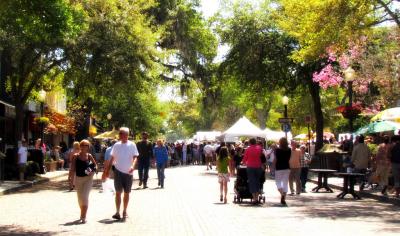
What's the Most Vibrant & Interesting Street In the U.S.?
We Need Your Input Creating the CNU Street Vitality Index (SVI)
Submitted on 12/10/2012. Tags for this image:The CNU Street Vitality Index group wants to create an initial list of 10 of the most vital street and vibrant urban places in the United States as a means of changing the conversation about the design of our streets.
We seek to get your input on:
What street in the United States to do you consider the most vital, vibrant, and interesting? Please visit our survey and provide the name of that street at the intersection of the cross street where you believe street vitality is most present. Once our survey is complete, we will prepare a listing of the top ten streets supported with scale maps showing their context. We hope that this illustrated list along with a short, simple table of information will begin to tell a very different story – one that we hope will change the conversation forever.
What is the Street Vitality Index?
Year-after-year the Texas Transportation Institute reports on traffic congestion in cities. Their logic is that congestion results in delay; the cost value of delay can be measured; and that eliminating delay will result in savings that will accrue to those cities and our society. Decade-after-decade, however, the investments that we make in reducing demand only induce additional demand and result in increased congestion. We have yet to build our way free from congestion.
The primary function of the CNU Street Vitality Index (SVI) will be a tool to evaluate, measure, and rank street networks on their capacity to create a sense of place and support economic development. The CNU SVI will identify street segments within networks that manifest essential characteristics that contribute to an area’s overall vibrancy and attractiveness. As a heuristic, there are three readily available metrics that can predict the relative vibrancy of a given street; for any given area the greater the number of street intersections, the greater the number of jobs, and the greater the number of residents – the more active, vital, and vibrant a neighborhood will be day to night, weekday to weekend, and season to season.


